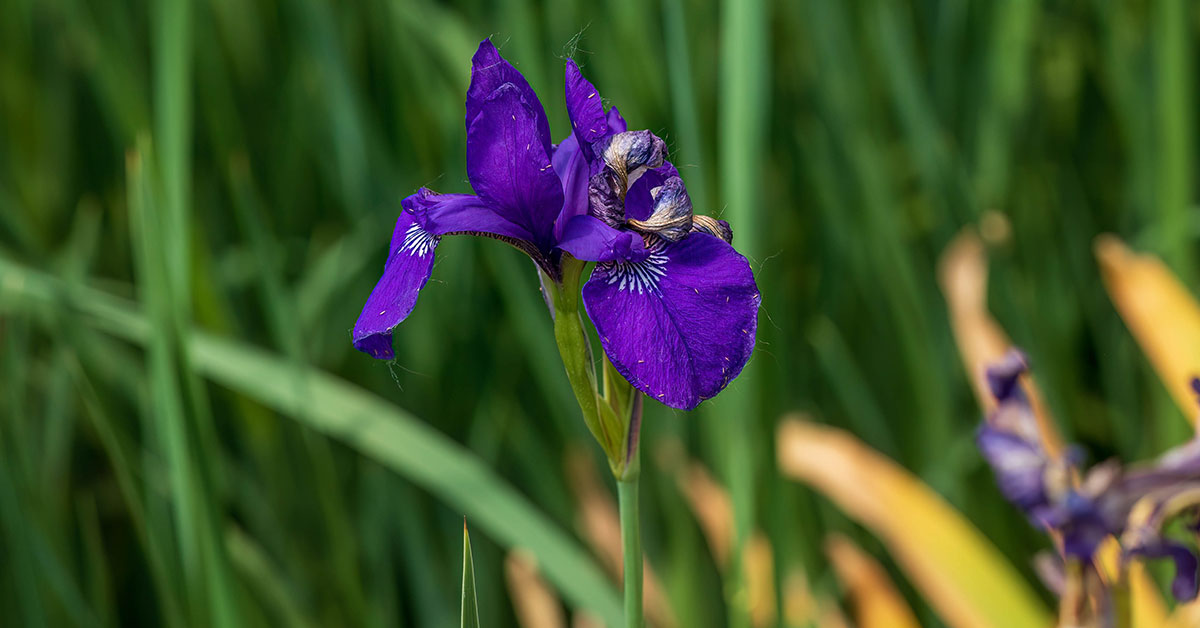Japanese Iris, known as Iris ensata, is an extraordinary flower celebrated for its elegance and distinct beauty. This captivating species, which often finds its home in gardens and public landscapes, possesses a unique allure. Here we dive deeper into the wonderful world of the Japanese Iris, exploring its origins, visual characteristics, and how to propagate and grow this stunning plant in your own garden.
What are Japanese Irises?
Japanese Iris, or Iris ensata, is a species within the Iris genus that hails from the family Iridaceae. They are notably different from other types of Irises such as the Bearded Iris (Iris germanica) and Siberian Iris (Iris sibirica) due to their unique flower form and preference for more water.
Known for their extensive presence in Japanese art, culture, and garden design, Japanese Irises play a significant role in the horticultural history of Japan, where they have been hybridized and cultivated for centuries.
What Do Japanese Irises Look Like?
Japanese Irises are recognized by their striking, flat, circular flowers, often with ruffled or slightly wavy edges. Unlike the prominent ‘beards’ found on some other Iris species, Japanese Irises are ‘beardless’, with three outer petals known as falls, and three inner petals called standards.
The falls are typically larger and more ornate, often showcasing intricate veining or a bright, contrasting ‘signal’ towards the base of the petal. The colors can range from white to varying shades of pink, lavender, blue, and violet. Some varieties also exhibit bi-color or multi-color patterns.
The plant’s foliage consists of erect, sword-shaped leaves that add architectural interest to the garden even when the plant is not in bloom. At full maturity, Japanese Irises can reach heights of 2 to 4 feet.
Japanese Iris Native Habitat and Invasiveness
Japanese Iris is native to Japan, where it is commonly found in regions that provide its preferred growing conditions, such as damp, acidic soils near marshes and water bodies. Despite its foreign origin, Japanese Iris is not typically considered an invasive species outside of its native range. They tend to clump rather than spread aggressively, and their growth can easily be managed in a garden setting.
How to Grow Japanese Irises
Japanese Irises can add a touch of elegance to any garden when given the right care and conditions.
Location: While they can tolerate partial shade, they bloom best in full sun. Plant them near a water feature or in a spot that stays consistently moist for optimal growth.
Soil: They prefer rich, acidic soil (pH 5.5 to 6.5) that is well-draining. Incorporating organic matter such as compost or well-rotted manure can improve soil fertility.
Watering: Japanese Irises require ample moisture, especially during the growing season. Water frequently to keep the soil consistently moist, but avoid waterlogging.
Fertilizing: Feed your plants in early spring with a balanced fertilizer, then again after blooming to encourage vigorous growth.
Maintenance: Prune dead leaves in the fall and remove spent blooms to keep plants looking tidy. Divide clumps every 3-4 years to maintain plant health and vigor.
How to Propagate Japanese Irises
Propagation of Japanese Irises is typically done through division. Here’s how:
- Division: Divide plants in late summer to early fall, once flowering is over. Carefully dig up the clump to be divided, preserving as many roots as possible.
- Clean off the soil and identify the rhizomes (the thick horizontal stems from which the leaves grow). Healthy rhizomes are firm and have roots at the bottom and fans of leaves at the top.
- Use a clean, sharp knife to cut the rhizome into sections, each with at least one fan of leaves and a set of roots.
- Replant the divisions promptly in prepared soil, setting the rhizomes so that the tops are level with or slightly below the soil surface.
In conclusion, the Japanese Iris, with its unique charm and elegant blossoms, can be an enchanting addition to a variety of landscapes. By understanding its growth requirements and propagation methods, you can ensure that these beautiful plants thrive in your garden, bringing joy for years to come.













